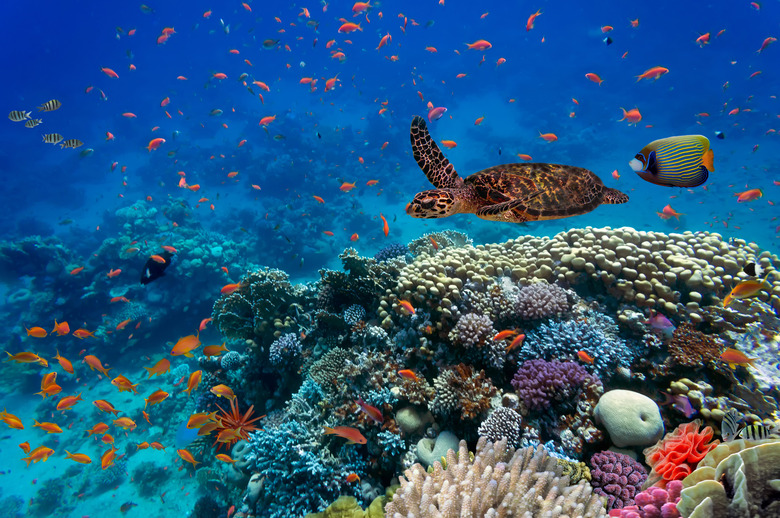Four Basic Components Of An Ecosystem
Ecosystems represent the interconnected nature of living organisms and their world. An ecosystem could be as small as a drop of pond water or as big as the Amazon rainforest. When you think about what makes an ecosystem function, the critical concepts revolve around the organic and inorganic components and their interactions with each other. The concept of an ecosystem is a jumping-off point for the study of many of the more complex behavioral and biological interactions that make up an ecological system.
Abiotic Components
Abiotic Components
The abiotic components of an ecosystem are all of the nonliving elements. They include the water, the air, the temperature and the rocks and minerals that make up the soil. Abiotic components of an ecosystem might include how much rain falls on it, whether it is fresh water or salt water, how much sun it gets or how often it freezes and thaws. The biotic components of the ecosystem both live on and interact with the abiotic components.
Producers at the Base
Producers at the Base
Producers are the living organisms in the ecosystem that take in energy from sunlight and use it to transform carbon dioxide and oxygen into sugars. Plants, algae and photosynthetic bacteria are all examples of producers. Producers form the base of the food web and are generally the largest group in the ecosystem by weight, or biomass. They also act as an interface with the abiotic components of the ecosystem during nutrient cycles as they incorporate inorganic carbon and nitrogen from the atmosphere.
Consumers in the Chain
Consumers in the Chain
Consumers are living organisms in the ecosystem that get their energy from consuming other organisms. Conceptually, consumers are further subdivided by what they eat: Herbivores eat producers, carnivores eat other animals and omnivores eat both. Along with producers and decomposers, consumers are part of what is known as food chains and webs, where energy and nutrient transfer can be mapped out. Consumers can only harvest about 10 percent of the energy contained in what they eat, so there tends to be less biomass at each stage as you move up the food chain.
Decomposers and Nutrient Cycling
Decomposers and Nutrient Cycling
Decomposers are the living component of the ecosystem that breaks down waste material and dead organisms. Examples of decomposers include earthworms, dung beetles and many species of fungi and bacteria. They perform a vital recycling function, returning nutrients incorporated into dead organisms to the soil where plants can take them up again. In this process they also harvest the last of the sunlight energy initially absorbed by producers. Decomposers represent the final step in many of the cyclical ecosystem processes.
Cite This Article
MLA
Becker, Andrea. "Four Basic Components Of An Ecosystem" sciencing.com, https://www.sciencing.com/four-basic-components-ecosystem-9557/. 23 April 2018.
APA
Becker, Andrea. (2018, April 23). Four Basic Components Of An Ecosystem. sciencing.com. Retrieved from https://www.sciencing.com/four-basic-components-ecosystem-9557/
Chicago
Becker, Andrea. Four Basic Components Of An Ecosystem last modified August 30, 2022. https://www.sciencing.com/four-basic-components-ecosystem-9557/
